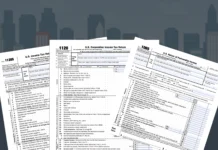The preliminary results of the investigation of the U.S. National Transportation Safety Board (NTSB) on the fatal crash involving a Tesla Model S showed that the driver was speeding while using the vehicle’s Autopilot system.
According to the NTSB, the Model S was running at a speed of 74 miles per hour (mph) before it collided to right side of a semitrailer of a 2014 Freightliner Cascadia truck-tractor on May 7, 2016 near Williston, Florida. The posted speed limit in the area was 65 mph.
The driver identified as Joshua Brown was the first known fatality driving a Model S while the Autopilot system was operating.
The NTSB found that Mr. Brown was using Tesla’s advanced driver assistance features such as the Traffic Aware Cruise Control and Autosteer lane keeping assistance while driving his Model S at the time.
The agency also found that the Model S was also equipped with automatic emergency braking designed to automatically apply the brakes to reduce the severity of or assist in preventing frontal collisions.
The NTSB did not yet include the probable cause of the accident. The agency is still investigating all aspects of the crash. The agency said the Florida Highway Patrol and Tesla Motors (NASDAQ:TSLA) are parties to the ongoing investigation.
NHTSA is investigating Tesla’s Autopilot system
The U.S. National Highway Traffic Safety Administration (NHTSA) is also conducting a separate investigation on Tesla’s Autopilot system. The agency wants to find out whether the system posed unreasonable risk to the safety of drivers.
According to Tesla, the NHTSA is simply conducting “a preliminary evaluation to determine whether the system worked according to expectations.”
The electric car manufacturer also emphasized that accident in Florida was the” first known fatality in just over 130 million miles where the Autopilot was activated. Among all vehicles in the US, there is a fatality every 94 million miles. Worldwide, there is a fatality approximately every 60 million miles.”









